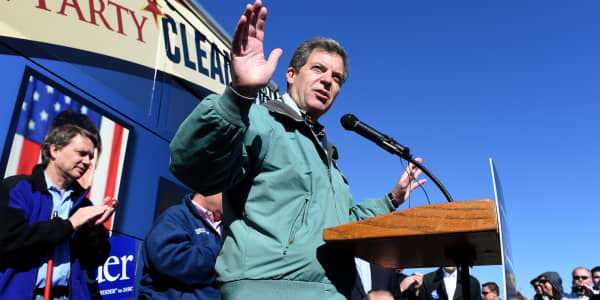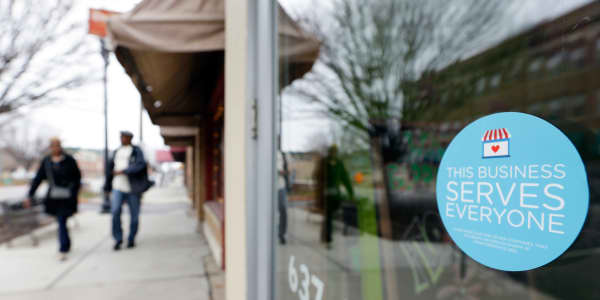With the Obamacare exchanges' recent rollout, the rate of people lacking health insurance has shrunk nationally, a trend that many experts say will continue in coming years.
But the strikingly wide differences in the uninsured rates of individual states could become even more pronounced as some governors and legislatures refuse to expand Medicaid eligibility to include more poor adults. As some states add to their Medicaid rolls, other states will not, widening the uninsured gap.
And even Obamacare's looming mandate that larger-sized employers offer affordable health coverage to workers will not erase differences between the insured rates among such employees in different states, observers said.
Read MoreA 2014 scorecard on how America's states stack up
Having insurance could not only make health-care services more affordable to consumers and lower the "bad debt" that hospitals incur when they treat people who can't pay for those services, but it could also save lives, according to one recent study.
The study, released in May by the Harvard School of Public Health, suggested that lowering the uninsured rate in Massachusetts had lowered the number of preventable deaths in that state by 320 per year. MIT professor Jonathan Gruber argued recently that if Medicaid benefits were expanded nationally, it could save an additional 6,000 lives.
The United States is unique among major Western democracies in its regional insurance-rate differences because of its lack of a national health-care plan, experts said.
"There is pretty huge variation ... between states in terms of their uninsured population," said Jennifer Tolbert, director of state health reform at the Kaiser Family Foundation, the health policy research group.
Nationally, the uninsured rate among non-elderly before Obamacare's launch was 18 percent. It has since fallen to about 13.4 percent, according to recent polls taken after government-run exchanges began enrolling an estimated 8 million people in Affordable Care Act health plans last October.
But Tolbert noted that the uninsured rates—pre-Obamacare launch—had ranged from "27 percent in Texas and Nevada at the highest end" to just "4 percent in Massachusetts." And Massachusetts's uninsured rate has fallen even further, to just about 1 percent, after the launch of Obamacare.
Read MoreAmerica's top states to live in 2014
Kaiser broke out the rates for the non-elderly because nearly all people 65 and over qualify for government-provided Medicare.
Disparity among states' uninsured rates stems from differences in the rates of coverage for specific types of health insurance.
In particular, data shows employer-provided plans and Medicaid account for most of the variation in the overall insured rates of states.
Individual insurance plans have accounted for a relatively small share of states' insurance markets and thus have a smaller effect on the variation seen in uninsured rates between states.
For example, in New Hampshire 68 percent of the non-elderly population was covered by employer plans. Connecticut and Massachusetts have similar rates, and no New England state has employer-provided rates below 56 percent.
But on the other end is New Mexico, where just 44 percent of non-elderly have job-linked coverage. Arkansas' rate is 48 percent, and Florida's is 49 percent, according to data from 2012, the last year that data about the percentage of people covered by insurance all 50 states and the District of Columbia is available.
Likewise, there are big differences in Medicaid's coverage rate. Tolbert said those variations stem from the fact that states have different Medicaid eligibility thresholds and different amounts of poor people.
Mississippi, she noted, has low eligibility levels, so much so that adults in a family of three making more than $384 per month could not obtain Medicaid coverage, although their dependent child would be covered. However, because Mississippi has so many poor people, the state has the seventh highest rate of Medicaid coverage in the nation, at 22 percent of its non-elderly population.
On the other hand, Minnesota, which for the same family of three offers Medicaid benefits to adults in that family if household income is as high as $3,181 per month, has a Medicaid coverage rate of just 15 percent for its non-elderly population, placing it 35th in the nation.
Read MoreState winners and losers in the jobs war
Obamacare's goal of reducing the uninsured rate nationally was supposed to be helped by a mandate that would compel states to grant Medicaid benefits to all poor adults, even those without dependent children, who made up to $16,104 annually.
But the 2012 Supreme Court decision that upheld the Affordable Care Act's overall legality also ruled that it would be up to individual states to decide whether to expand Medicaid eligibility.
So far, 24 states have refused to expand eligibility, and virtually all of them are led by Republican governors or have Republican-dominated legislatures that are strongly opposed to Obamacare.
John Holahan, a fellow at the Urban Institute's Health Policy Center, said the refusal to expand Medicaid eligibility will have a significant effect both on the uninsured rate nationally and on the variation of the insured rates between individual states.
Holahan predicted that over the next five years or so, the uninsured rate will fall "maybe to 9 percent to 10 percent" nationally. But the uninsured rate could be reduced to half of that "if everybody expanded Medicaid," he said.
The uninsured rate "will change the most in states with high uninsured rates that adopt the Medicaid expansion," Holahan added.
Read More5 ways states are luring small business
"I would expect more of a drop in New Mexico than I would in Texas," he said. New Mexico, with a 24 percent uninsurance rate, has adopted Medicaid expansion, while the uninsured leader—Texas, at 27 percent—has not.
Holahan said that while the Obamacare exchanges that sell private insurance will contribute to an overall reduction in the number of previously uninsured people, "the lion's share" of the reduction in the uninsured rate will come from newly eligible Medicaid enrollees. And he predicted that the uninsured rates between states that expand Medicaid and those that down will vary wider than they do now as a result.
"It's fascinating," Holahan said. "The disparities will be even greater after the [Affordable Care Act] was implemented."
But the financial effects of not expanding Medicaid eligibility is prompting even some die-hard Obamacare opponents, such as Indiana Gov. Mike Pence, to rethink their opposition to broadening Medicaid benefits.
The Future of Medicaid
Dan Mendelson, CEO of the Avalere Health consultancy, said he could see "most states" adopting Medicaid expansion if the federal government honors its promise to cover the bulk of the costs for the newly eligible and continues allowing states some say in the design of the expanded benefits.
The federal government has promised to pay 100 percent of the costs of newly eligible Medicaid beneficiaries for the first three years and 90 percent of the costs thereafter.
"If the federal government pays most of it and there's some flexibility, then virtually all states will have some form of Medicaid expansion," Mendelson said.
Even states that don't expand Medicaid eligibility will likely see decreases in their uninsurance rates, because their residents can buy private individual insurance on the government-run Obamacare exchanges.
The consultancy Oliver Wyman projects the national uninsurance rate will drop to 9 percent by 2018 and that Obamacare exchanges will have enrolled a total of 25 million people in individual or small-business-based SHOP health coverage.
But Todd Van Tol, a partner in Oliver Wyman's health and life-sciences practice, said he strongly expects there to be differences in the short term between various states regarding the percentage of eligible people who buy coverage from the Obamacare exchanges.
Van Tol noted that premium rates for 2015—the second year of Obamacare plans—are starting to be released, and he said that in "some states, there are likely to be fairly significant increases."
Those price hikes, he said, "will slow the rate of growth in the exchange population across states," he said. "Rates will be higher; that will make it harder for people to renew; we will see less uptake in those states."
"There is pretty huge variation . . . between states in terms of their uninsured population.Jennifer Tolbertdirector of state health reform, Kaiser Family Foundation
Van Tol also said that the reduction in the rate of uninsured nationally could be slowed if there is yet another delay in Obamacare's employer mandate, which was supposed to go into effect this year. The mandate calls for employers with 50 or more full-time workers to offer affordable coverage to their workers.
The first employer mandate delay postponed the rule until 2015. In a later move, the Obama administration announced that starting in 2015, the mandate will apply only to employers with 100 or more workers, and in 2016 to employers with between 50 and 99 workers in 2016.
"Let's be honest with ourselves," Van Tol said. "The employer mandate is subject to future delays as well."
If and when that mandate does take effect, he said, "I would anticipate that we could see less skew in terms of the employer-insured rate," which in turn could reduce the differences in the uninsured rate between states.
"That said, I would anticipate some disparity to be maintained," Van Tol said.
Van Tol and other experts said the uninsured rate of a given state has not been among the concerns of businesses looking to move their operations.
But, he said, the uninsured rate can—and to some extent already does—play a role in states trying to lure companies by promoting "the health-care environment" of the state, which can include the relative health of its population and its prevalence of hospitals and other medical providers.
Read MoreFrankenstates: Winning the agriculture tech war
Van Tol said Minnesota's Department of Employment and Economic Development, in addition to pointing out the presence of the Mayo Clinic in that state, has been "highlighting the fact that they have a 92 percent insured rate."
Last Wednesday, the day Van Tol spoke to CNBC, Minnesota's Obamacare exchange and the University of Minnesota jointly announced that the state's uninsured rate had declined even further and that less than 5 percent of the population now lacked health coverage—a more than 40 percent reduction in the uninsured rate.
The state's Medicaid programs played a big role in reducing the uninsured rate, according to officials, who cite the fact that "67 percent of uninsured adults and 82 percent of uninsured kids are eligible for public programs."
"Our findings are consistent with reports of early national impacts of the Affordable Care Act," said Julie Sonier, deputy director of the University of Minnesota's State Health Access Data Assistance Center.
"We know the ACA's impacts will vary by state, and our purpose in doing this analysis was to examine the impacts on Minnesota, in advance of the first state-level results from surveys, which are not expected until the end of this year at the earliest."
—By CNBC's Dan Mangan





